You searched for: 宠物养成源码快速搭建【TG���������@EK7676】平台包网搭建宠物养成源码快速搭建【TG���������@EK7676】平台包网搭建31g7RhBIZa
<< Previous | Displaying results 51-96 of 96 for "宠物养成源码快速搭建【TG���������@EK7676】平台包网搭建宠物养成源码快速搭建【TG���������@EK7676】平台包网搭建31g7RhBIZa" | Next >>
-
Helen Katz
ID CardThe youngest of eight children, Helen was born and raised in a religious Jewish family living in a town in northeastern Hungary. She was the "baby" of the family and the focus of everyone's hopes and affection. Although her Hebrew name was Hannah, her family called her by her nickname, Potyo, which meant "the dear little one." 1933-39: Helen liked school, but was afraid because some of the kids and teachers hated Jews. There was talk that there might be a war. Her mother wanted them to leave Hungary…

-
Elsa (Eliska) Skutezka Kulkova
ID CardElsa was the eldest of three children born to Jewish parents in Brno, the capital of Moravia, where her father ran a successful shipping company. In 1920 she graduated from a German-language secondary school. She married and moved to Bratislava, but the marriage was unsuccessful and Elsa returned to Brno in 1926, where she opened a millinery business. 1933-39: On May 24, 1933, Elsa married Robert Kulka and the couple settled in Robert's hometown of Olomouc. Their son, Tomas, was born a year and a day…
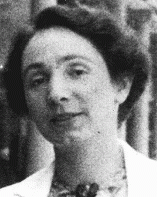
-
Johanna (Hanne) Hirsch
ID CardHanne was born to a Jewish family in the German city of Karlsruhe. Her father, Max, was a photographer. When he died in 1925, Hanne's mother, Ella, continued to maintain his studio. In 1930 Hanne began public school. 1933-39: In April 1933 Hanne's family's studio, like the other Jewish businesses in Karlsruhe, was plastered with signs during the anti-Jewish boycott: "Don't buy from Jews." At school, a classmate made Hanne so furious with her taunts that she ripped her sweater. After the November 1938…
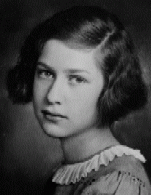
-
Kathe Ert Reichstein
ID CardKaethe was the fifth of nine children born to Jewish parents. After graduating from secondary school, Kaethe worked with her father in his bakery. In 1918 she married Samson Reichstein, and the couple settled in Hanover, where Samson was based as a salesman. Their son Herbert was born in 1920. As his wife, Kaethe was officially required to take on her husband's citizenship. 1933-39: In 1938 Kaethe and her husband succeeded in obtaining an exit visa for the United States for their 18-year-old son Herbert…

-
Ema Schwarzova Skutezka
ID CardOne of two children born to religious Jewish parents, Ema was raised in the small Moravian town of Lomnice, where her mother ran a general store. In 1901 Ema married Eduard Skutecky, a regular customer at her mother's store. The couple settled in the city of Brno, where they raised three children. Eduard ran a shipping company. 1933-39: By 1933 Ema's three children were grown and had moved out. Four years later her husband passed away, and Ema moved in with her eldest daughter, Elsa. Elsa and her husband…

-
Zalie Waldhorn
ID CardZalie was the second of three children born to immigrant Jewish parents. Her Polish-born father was a former officer in the Austro-Hungarian army who had met and married her Hungarian-born mother during World War I. Shortly before Zalie was born, her parents settled in Paris. There, Zalie and her brother and sister grew up in a religious household. 1933-39: Zalie's mother said it was better in Paris than in the poor village in which she grew up. Her mother spoke broken French, but Zalie grew up speaking…
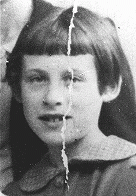
-
Maria Terez Halpert Katz
ID CardAlso known by her Yiddish name, Tobe, Terez was raised in a religious Jewish family. Her father and two brothers were rabbis. Though Terez was a promising student, she didn't pursue an advanced education because her traditional family wanted her to marry. So Terez married Menyhert Katz and moved to the town of Kisvarda [in Hungary]. There, she raised five daughters and one son; two other sons died. 1933-39: Terez's twin sons died when they were 8 months old, and she was convinced that their death was a…

-
Shaul Himmelfarb
ID CardOne of nine children, Shaul was raised in a Yiddish-speaking, religious Jewish family in Koprzewnica, a small town in southern Poland. He married his teenage sweetheart, Alta Koppff, and opened a grocery store in the front of his mother-in-law's house. The couple had three children. The store's busiest day was Thursday, when farmers and villagers would come to town for market day. 1933-39: On September 1, 1939, Germany invaded Poland. Soon after, German troops entered Koprzewnica. While fighting between…
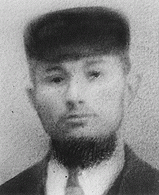
-
Alta Koppff Himmelfarb
ID CardThe daughter of a rabbi, Alta was one of six children raised in a Yiddish-speaking Jewish family in the town of Koprzewnica [in Poland]. Alta was one of the prettiest girls in town, and when she was 19 she married Shaul Himmelfarb, a childhood friend. Shaul opened a grocery store, and Alta ran the store on market days when Shaul was away buying merchandise. The couple had three children. 1933-39: On September 1, 1939, Germany invaded Poland. Soon after, German troops entered Koprzewnica. While fighting…
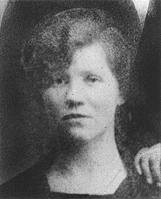
-
Fischel Felman
ID CardFischel was the oldest of seven children in a Yiddish-speaking, religious Jewish family. When he was a small child, his parents moved the family to Sokolow Podlaski, a manufacturing town in central Poland with a large Jewish population of about 5,000. Fischel was sent to study at a religious school. In 1932, when he was 21 years old, Fischel was inducted into the Polish army. 1933-39: After two years in the Polish cavalry, Fischel returned to Sokolow Podlaski, where he apprenticed to become a carpenter…
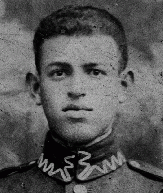
-
Elya Rosenblat
ID CardElya, also known as Eli, was the eldest of three sons born to Yiddish-speaking Jewish parents. When Elya was a child his family moved to the industrial city of Radom, located about 60 miles south of Warsaw. After completing school in Radom, Elya apprenticed to become a women's tailor. Eventually, he became licensed as a master tailor. 1933-39: Elya married in 1936 and had a daughter one year later. He and his wife lived on Zeromskiego Street across from Elya's younger brother, Itzik, who was also a…
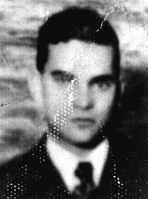
-
Miksa Deutsch
ID CardMiksa was the youngest of four children born to religious Jewish parents. The Deutches lived in the town of Bistrita in Transylvania, a region of Romania that belonged to Hungary until 1918. After 1910, the family lived in nearby Viseu de Sus. In 1922 Miksa moved to Budapest, Hungary, where he and his older brother, Pal, opened a business selling matches. In 1928 Miksa married Kornelia Mahrer. 1933-39: Miksa and Kornelia had three children, whom they raised with a religious education. Miksa and his…

-
Jozef Tiso
ArticleJozef Tiso was a Slovak politician and a Roman Catholic priest. From 1939 to 1945, he was the president of the Slovak Republic, one of Nazi Germany’s allies.
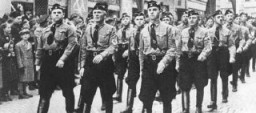
-
Roosevelt announces aid for Britain
FilmAlthough constrained by powerful isolationist sentiment in the United States, President Roosevelt was determined to help democratic Great Britain continue the war against Nazi Germany. Even as he promised to keep the United States neutral in the European war, Roosevelt ordered the expansion of military construction and pledged--as shown in this footage--that the United States would serve as the "great arsenal of democracy." In March 1941, Congress approved Lend-Lease aid for Britain. Britain ultimately…
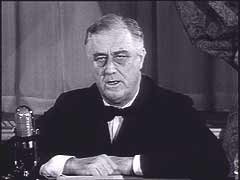
-
William Denson describes postwar trials of concentration camp personnel
Oral HistoryWilliam Denson graduated from the US Military Academy at West Point in 1934 and attended Harvard Law School. He returned to West Point to teach law from 1942 until 1945. In January 1945, Denson accepted the position of Judge Advocate General (JAG) in Europe and was assigned to US Third Army headquarters in Germany. He took part in more than 90 trials against Germans who had committed atrocities against downed American pilots. In August 1945, Denson became chief prosecutor for the US government at the…

-
Elie Wiesel Timeline and World Events: 1928–1951
ArticleSurvivor Elie Wiesel devoted his life to educating the world about the Holocaust. Learn about key events in the world and his life from 1928–1951.

-
"Final Solution": In Depth
ArticleThe "Final Solution," the Nazi plan to kill the Jews of Europe, was a core goal of Adolf Hitler and the culmination of German policy under Nazi rule.

-
SS and the Holocaust
ArticleLearn more about the SS and the organization’s involvement in perpetrating the Holocaust.
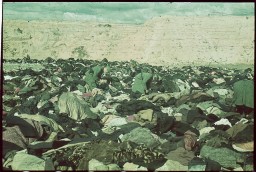
-
Adolf Eichmann
ArticleCharged with managing the mass deportation of Jews to ghettos and killing centers, Adolf Eichmann was a key figure in the "Final Solution."
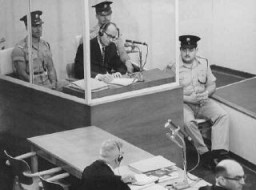
-
Theresienstadt: Concentration/Transit Camp for German and Austrian Jews
ArticleLearn about the role of Theresienstadt in the deportation of German and Austrian Jews to killing sites and killing centers in the east.

-
Adolf Hitler: 1919-1924
ArticleAdolf Hitler established himself as absolute Führer, or leader, of the Nazi Party by 1921. Learn more about Hitler in the years 1919-1924.

-
World War II in Europe
ArticleGermany started World War II in Europe on September 1, 1939, by invading Poland. War would continue until 1945. Learn more about WWII and genocide in Europe.
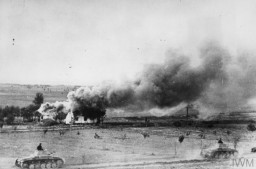
-
The Search for Perpetrators
ArticleThousands of Nazi criminals were never arrested. Learn more about the postwar efforts to bring Nazi perpetrators to justice.

-
Ravensbrück
ArticleLearn about conditions and the treatment of prisoners in Ravensbrück, the largest concentration camp for women in the German Reich.

-
Arrests without Warrant or Judicial Review
ArticleAllowing arrests without a warrant or judicial review was a key step in the process by which the Nazi regime moved Germany from a democracy to a dictatorship
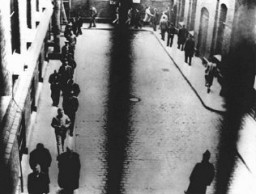
-
American Jewish Joint Distribution Committee and Refugee Aid
ArticleA relief organization, the American Jewish Joint Distribution Committee (JDC or Joint) was established in 1914. Learn about its activities before, during, and after WWII.
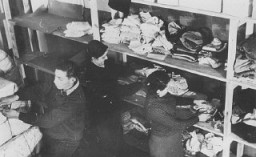
-
Hermann Göring: Key Dates
ArticleHermann Göring held many positions of power and leadership within the Nazi state. Learn about key dates in the life of Hermann Göring.
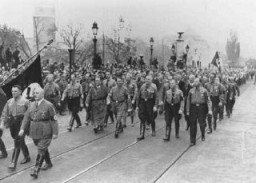
-
Warsaw Uprising
ArticleThe 1944 Warsaw uprising was the single largest military effort undertaken by resistance forces to oppose German occupation during World War II.

-
Adolf Hitler: Key Dates
ArticleLearn about some key dates in the life of Adolf Hitler, one of Europe's most ruthless dictators, who led the Nazis from 1921 and Germany from 1933-45.

-
Jacob Wiener
ArticleExplore Jacob Wiener’s biography and learn about his experiences during Kristallnacht in Würzburg, Germany.

-
United States Immigration and Refugee Law, 1921–1980
ArticleUS immigration and refugee laws and policies evolved in response to World War I, the 1918 influenza pandemic, and World War II and the Holocaust. Learn more.
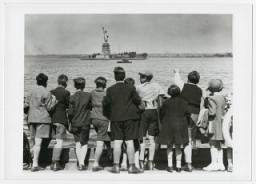
-
Gerd Jacob Zwienicki
ID CardGerd was the eldest of four children. His father, Josef, had left Ukraine in 1913 and opened a bicycle sales and repair shop in Bremen. His mother, Selma, was descended from a distinguished Jewish family and had been a kindergarten teacher and a bookkeeper for a large firm. As a child, Gerd experienced the hardships of the Depression and witnessed the violent street fights between the Nazis and their political opponents, the Communists and Socialists. 1933–39: When the Nazis came to power in 1933, Gerd…
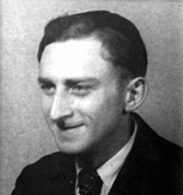
-
Antisemitic Legislation 1933–1939
ArticleHundreds of laws, decrees, guidelines, and regulations increasingly restricted the civil and human rights of Jews in Germany from 1933-39. Learn more.
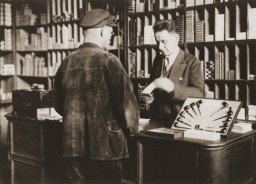
-
1941: Key Dates
ArticleExplore a timeline of key events during 1941 in the history of Nazi Germany, World War II, and the Holocaust.
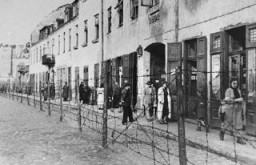
-
Anti-Jewish Legislation in North Africa
ArticleThe Vichy regime introduced race laws to the North African territories in October of 1940. Learn about the impact of the laws on the region’s Jewish people.
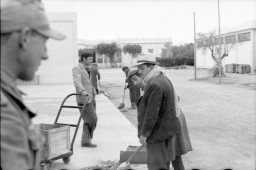
-
Kurt Gerstein
ArticleSS officer Kurt Gerstein was horrified by what he witnessed at the Belzec killing center. Learn about how he recorded what he witnessed and about his postwar fate.
-
The Eastern Front: The German War against the Soviet Union
ArticleOften referred to as the “eastern front,” the German-Soviet theater of war was the largest and deadliest of World War II. Learn more about the background and key events.
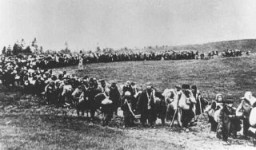
-
World War II: In Depth
ArticleGermany started World War II in Europe on September 1, 1939, by invading Poland. War would continue until 1945. Learn more about key events in the history of WWII.
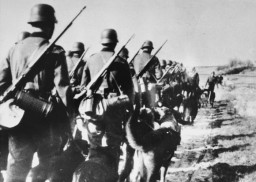
-
Hajj Amin al-Husayni: Arab Nationalist and Muslim Leader
ArticleHajj Amin al-Husayni claimed to speak for the Arab nation and the Muslim world and sought an alliance with the Axis powers during WWII. Learn more about his actions

-
Deceiving the Public
ArticleThe Nazis frequently used propaganda to disguise their political aims and deceive the German and international public. Learn more.

-
The Immigration of Refugee Children to the United States
ArticleMore than one thousand unaccompanied refugee children fleeing Nazi persecution arrived in the United States between 1933 and 1945. Learn more

-
Ritchie Boys
Article“Ritchie Boys” is a term used for American soldiers who trained at Camp Ritchie during World War II. Several thousand were Jewish refugees from Europe. Learn more.
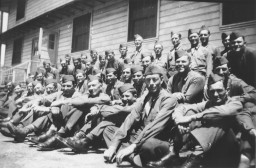
-
Stanisławów
ArticleLearn more about the history of Stanisławów during the Holocaust and World War II.
-
Reinhard Heydrich: In Depth
ArticleReinhard Heydrich, Reich Security Main Office chief, was one of the main architects of the “Final Solution," the Nazi plan to murder the Jews of Europe.
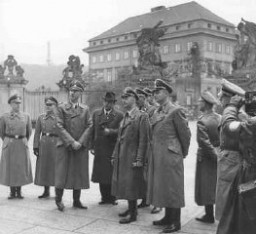
-
Holocaust Denial: Key Dates
ArticleBrowse a timeline listing some key events in the evolution of Holocaust denial and the distortion of the facts of the Holocaust.
-
Mauthausen
ArticleThe Mauthausen concentration camp was established following the Nazi incorporation of Austria in 1938. Learn about the harsh conditions in the camp.

